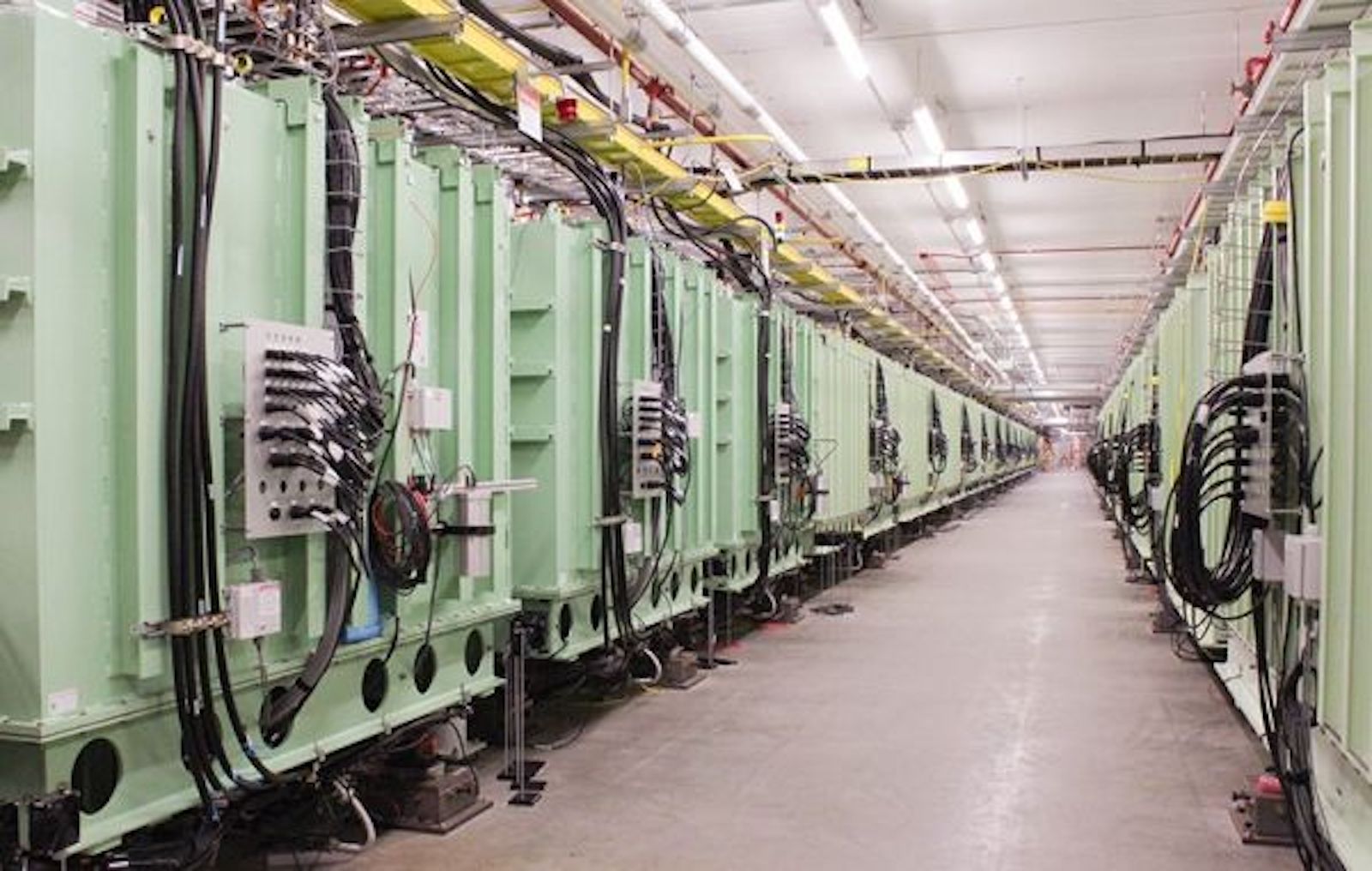World's most powerful heavy-ion collider to go online this week
It will allow scientists to peer into the inner workings of supernovas

The world's most powerful heavy-ion accelerator — which will create new exotic atoms and reveal how stars and supernovas forge the elements that make up our universe — is finally completed, researchers announced May 2.
Experiments at the $730 million Facility for Rare Isotope Beams (FRIB) at Michigan State University (MSU) are slated to start this week. Once online, the new reactor will fire two heavy atomic nuclei at each other, splitting them apart in ways that enable scientists to study what glues them together and how rare atomic isotopes — versions of chemical elements with different numbers of neutrons in their nuclei — are structured.
While past heavy-ion accelerators (such as the National Superconducting Cyclotron Laboratory, MSU's previous accelerator) enabled scientists to catch glimpses of exotic atoms, they didn't produce them at a fast enough rate to make detailed study possible. The new FRIB accelerator will grant researchers access to more than 1,000 new isotopes, giving them fresh insight into new cancer treatments, radiometric dating of ancient materials, and nuclear security, according to MSU scientists.
Related: 'X particle' from the dawn of time detected inside the Large Hadron Collider
"FRIB will be the core piece of our nation's research infrastructure," Thomas Glasmacher, the FRIB Laboratory Director, said at the ribbon-cutting ceremony, according to the Lansing State Journal. "More than 1,600 scientists are eager to come here because we will be the best, most powerful superconducting heavy-ion linear accelerator."
Physicists are excited by the FRIB because it may provide a much clearer view of the landscape of possible atomic isotopes. Right now, physicists have a good idea of what holds nuclei together — one of the four fundamental forces called the strong force — and have made a good number of models to predict what some unobserved atomic nuclei might look like. But nuclei are complex and can glue together in surprising ways, making the models far too simplistic. A number of the nuclei predicted by the models, for instance, might not hold together well enough to exist.
Other questions that scientists hope to answer include how well the most stable isotopes are described by current models, and how elements heavier than iron and nickel (the latter two being the heaviest elements made by nuclear fusion in stars) are formed through radioactive beta decay. Beta decay takes place when an atomic nucleus absorbs a neutron or when one of its neutrons becomes a proton, making the nucleus unstable.
Get the Space.com Newsletter
Breaking space news, the latest updates on rocket launches, skywatching events and more!
Scientists believe that elements formed by beta decay are typically made as byproducts of supernovas or the collisions of neutron stars, but until now haven't been able to check, or to study what kinds of elements are produced and in what proportions during these celestial processes. But FRIB will provide a way to finally test these suppositions, as one if its accelerators speeds up individual isotopes before smashing them into a target, enabling scientists to simulate the collisions that take place inside stars and supernovas.
To produce isotopes for study, physicists will select atoms of a very heavy element, such as uranium, before stripping them of their electrons to turn them into ions. Then they will launch them down a 1,476-foot-long (450 meters) pipe more than halfway to the speed of light. At the end of the pipe, the beam of ions will hit a graphite wheel, splintering into smaller neutron-proton combinations, or isotopes.
By steering these freshly made isotopes through a series of finely adjustable magnets, the physicists will be able to carefully select which isotope they want to fire into one of the facility's experimental halls for further study. FRIB will eventually be joined by another atom smasher, the $3.27 billion Facility for Antiproton and Ion Research (FAIR) currently being built in Darmstadt, Germany. The accelerator, set for completion in 2027, has been designed to make antimatter as well as matter, and will be able to store the nuclei it produces for longer timeframes than FRIB.
Originally published on Live Science.
Join our Space Forums to keep talking space on the latest missions, night sky and more! And if you have a news tip, correction or comment, let us know at: community@space.com.

Ben Turner is a U.K. based staff writer at Live Science. He covers physics and astronomy, among other topics like weird animals and climate change. He graduated from University College London with a degree in particle physics before training as a journalist. When he's not writing, Ben enjoys reading literature, playing the guitar and embarrassing himself with chess.










